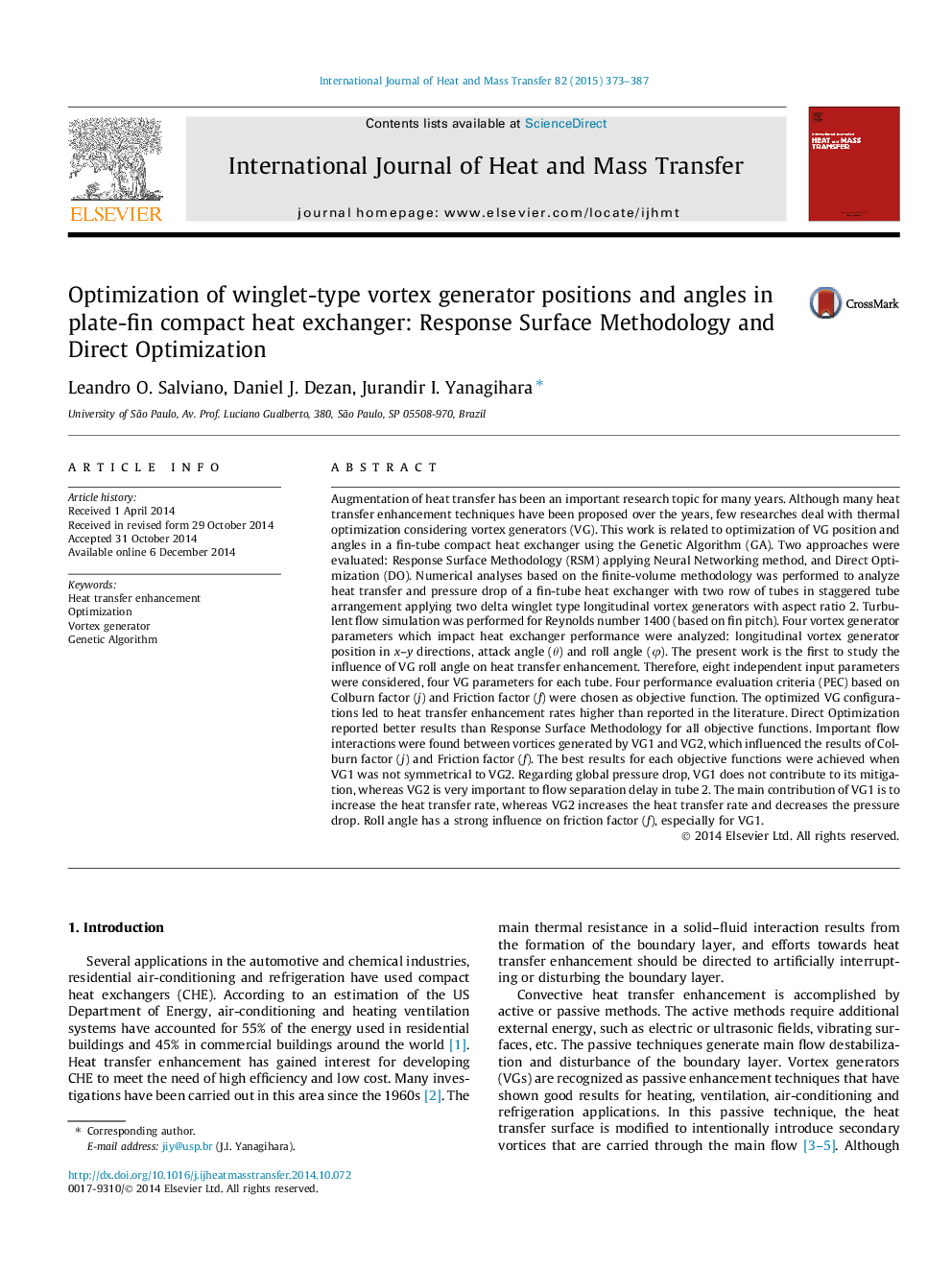| کد مقاله | کد نشریه | سال انتشار | مقاله انگلیسی | نسخه تمام متن |
|---|---|---|---|---|
| 657355 | 1458060 | 2015 | 15 صفحه PDF | دانلود رایگان |
Augmentation of heat transfer has been an important research topic for many years. Although many heat transfer enhancement techniques have been proposed over the years, few researches deal with thermal optimization considering vortex generators (VG). This work is related to optimization of VG position and angles in a fin-tube compact heat exchanger using the Genetic Algorithm (GA). Two approaches were evaluated: Response Surface Methodology (RSM) applying Neural Networking method, and Direct Optimization (DO). Numerical analyses based on the finite-volume methodology was performed to analyze heat transfer and pressure drop of a fin-tube heat exchanger with two row of tubes in staggered tube arrangement applying two delta winglet type longitudinal vortex generators with aspect ratio 2. Turbulent flow simulation was performed for Reynolds number 1400 (based on fin pitch). Four vortex generator parameters which impact heat exchanger performance were analyzed: longitudinal vortex generator position in x–y directions, attack angle (θ) and roll angle (φ). The present work is the first to study the influence of VG roll angle on heat transfer enhancement. Therefore, eight independent input parameters were considered, four VG parameters for each tube. Four performance evaluation criteria (PEC) based on Colburn factor (j) and Friction factor (f) were chosen as objective function. The optimized VG configurations led to heat transfer enhancement rates higher than reported in the literature. Direct Optimization reported better results than Response Surface Methodology for all objective functions. Important flow interactions were found between vortices generated by VG1 and VG2, which influenced the results of Colburn factor (j) and Friction factor (f). The best results for each objective functions were achieved when VG1 was not symmetrical to VG2. Regarding global pressure drop, VG1 does not contribute to its mitigation, whereas VG2 is very important to flow separation delay in tube 2. The main contribution of VG1 is to increase the heat transfer rate, whereas VG2 increases the heat transfer rate and decreases the pressure drop. Roll angle has a strong influence on friction factor (f), especially for VG1.
Journal: International Journal of Heat and Mass Transfer - Volume 82, March 2015, Pages 373–387
